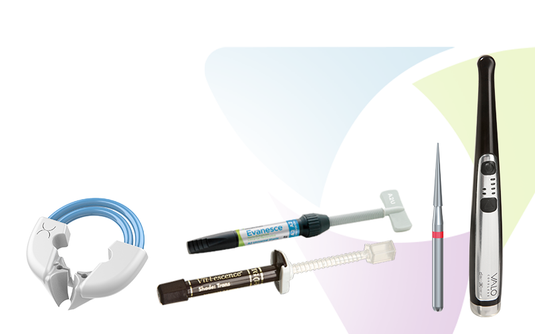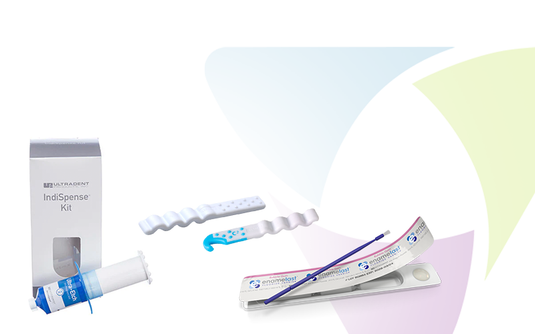
Efficient Post Core Fabrication
While modern endodontics, including access design, conservative root canal shapes and better irrigation protocols have evolved significantly in the past 10 to 15 years, it is still acknowledged that the restorative continuum is a key factor in the long-term success of endodontically treated teeth.
When a post and core are part of the foundation of a permanent restoration, then certain fundamental modern principles MUST be observed, such as:
• A post placement protocol that ensures maximum bond strengths and the best possible retention.
• Preserving as much tooth structure as possible.
• Respecting the existing radicular anatomy.
• The ability to retreat the case predictably if necessary.
• Choosing the right post and core materials.
• A post should NOT weaken the tooth, it should possibly reduce the risk of fracture, not increase it.
Focusing on the post itself, modern pre-fabricated posts which are fiber-reinforced resin posts represent the standard of care in most cases. They are usually reinforced with eGlass or quartz fibers, and as a group, exhibit a favorable modulus of elasticity, almost equal to dentin. But not all posts are created equal, so the following are critical features to look for in a fiber post:
• High radiopacity.
• A tapered shape in keeping with canal shapes.
• A pre-silanated, micro-retentive surface conducive to bonding.
• High flexural strength.
• Some macro-retentive features, grooves or spirals, and anti-rotation design to enhance bonding success.
• A non-aggressive matching post drill that removes as little tooth structure as possible.
While I have used a few different posts in my practice, the one that ticks off all the boxes for me is the Macro-Lock XRO Illusion, from RTD. I have placed over 500 of them without a single failure. The gentle taper, close to a .04 is in keeping with modern canal shapes. The micro-retentive surface combined with macro-retentive spirals in the canal portion along with an anti-rotational core design give me confidence that a post placed 5-6mm into the canal is more than adequate to ensure excellent retention and maximum bond strength. At 1800 MPa, it has among the highest flexural strengths of any fiber post, and is the most radiopaque I have worked with. Another nice little feature is the illusion technology; the intrinsic translucent color disappears at body temperature when placed, but if re-treatment was necessary, all I have to do is expose the post in the core, spray a bit of cold water on, and the color reappears to show me where to drill out the post.
While there are a variety of methods to cement these posts, I have always relied on a single bottle total-etch adhesive (MPa Max, Clinician’s Choice), with a dual-cure composite core material, such as Zircules (Clinician’s Choice) for maximum bond strength. Zircules is a superior material due to its hardness, making it effortless to trim, as well as its superior handling characteristics; it NEVER slumps, and I use it for both cementation and build-up.
Clinical Technique

FIG. 1
Completed RCT with post space in palatal root.

FIG. 2
Etched coronal access and post space.

FIG. 3
MPa Max applied to post space and access and air thinned.

FIG. 4
Post cemented in canal with Zircules and cured.

FIG. 5
Core incrementally built-up and cured.
REFERENCES
1. Bitter, K, Noetzel, J, Stamm, O, Vaudt, J, Meyer-Lueckel, H, Neumann, K, Kielbassa, AM. Randomized clinical trial comparing the effects of post placement on failure rate of postendodontic restorations: preliminary results of a mean period of 32 months. J Endod. 2009 Nov;35(11):1477-82. Epub 2009 Sep 18.
2. Dallari, A., Mason, P., Rovatti, L., Dallari, B. Effect of surface treatments on retention of quartz-fiber posts. J Dent Res. Vol 87 (Spec. Iss. C) Abstract #0383, PEF Division 2008 (www.dentalresearch.org)
About the Author

Manfred Friedman, BDS, BChD
Dr. Manfred Friedman graduated from the University of Witwatersrand Johannesburg in 1971 and then obtained his B.Ch.D. Honors at the University of Pretoria in 1980. He taught the undergrad Endodontic Lab course at Schulich School of Medicine and Dentistry at Western University from 1995 to 2021. Dr. Friedman has given numerous courses on Endodontics at the University of Western Ontario, with interests in rotary instrumentation, endodontic materials, Apex locators, and restoring the endodontically treated tooth.
Discover More
This article was originally published in the Clinical Life™ magazine: Fall 2022 edition
Clinical Life™ magazine is a premier periodical publication by Clinical Research Dental Supplies & Services Inc. Discover compelling clinical cases from Canadian and US dental professionals, cutting-edge techniques, product insights, and continuing education events.













